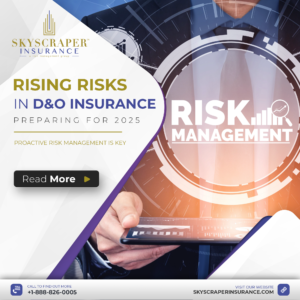The need for alternative treatments during the pandemic has created a wave of new research and guidelines for therapy.
Behavioral medicine now offers options like individual or group sessions and on-demand treatments that can be utilized without a therapist.
The COVID-19 pandemic has put an enormous strain on the health care system, delaying non-emergency medical care, potentially creating a higher risk for pain patients. However, the behavioral health community is adjusting with transitions to telemedicine and other alternatives that allow their patients to receive the care they need. Knowing clinicians are feeling additional stress during this time, telehealth options are readily available for the health care community too. We cannot expect those working in health care to properly care for others unless we are prioritizing their mental health needs.
Does 2020 already feel like it’s been a long year? If so, the good news is that we’re not even a full quarter into it, so there is still ample time to rebound and course-correct to reach the goals you have set for yourself and have some fun and good times along the way.
Crisis Management Plan For Your Business
How today’s response can position your business to thrive tomorrow
While the safety and well-being of workers affected by COVID-19 is the first priority, companies will also triage other essentials, such as incident management and stakeholder communications.
How can businesses verify the information that’s coming in about the virus? What data is important to know, and where are there gaps that need to be filled? If the outbreak continues, how will that create health risks to employees and financial risks to the business? Even if the virus is contained in a relatively short time frame, it’s likely to leave a number of tough issues for businesses to manage.
In response to COVID-19, companies are developing their contingency plans quickly. Some are adapting existing plans to handle this outbreak, while others are starting from scratch.
A number of relevant topics from our risk management team.
- Coronavirus Preparedness for Managers and Employees
- Crisis Management and Emergency Response Planning
- Handling Stress
- Managing Remote Teams
- Working Remotely
What to look at now
Create a dedicated crisis team
A crisis like COVID-19 can have an impact on every part of the business. Senior-level oversight — and internal cohesion among cross-functional teams, grounded in preparation, training and testing — are key to good outcomes. Every member of the team — from executive leadership down — should know who is doing what. If you haven’t already, train the people involved in executing the plan to be sure they’re ready at a moment’s notice.
Establish the facts
Reliable data underpins both crisis planig and response. It’s essential that the crisis plan outlines how information will flow and that everyone has confidence in its veracity. Strong data also reinforces a central element of crisis planning — exploring different scenarios and how they could affect the business in the short, medium and long term. Our survey found that three-quarters of those in a better place post-crisis strongly recognize the importance of establishing facts accurately during the crisis. They are more likely to say that in the midst of the crisis, they did gather facts accurately and quickly — and they used those facts effectively to inform their response strategy.
Collaborate — internally and externally
Three key participants are at the heart of any crisis response.
- Public relations and communications teams: They’re responsible for developing and delivering the organisation’s messaging internally and externally.
- Legal and regulatory teams: Their role is to understand the organisation’s risk exposures and advise on appropriate responses.
- Operational response teams: They essentially handle everything else – including establishing the facts that the other two groups need to do their jobs.
Achieving the close orchestration needed between the communications, legal and operational teams is not always easy, partly because they’re often used to working in separate silos. Create a small core committee drawn from across them, empowered to make tactical decisions and escalate important issues to board level. This approach helps create the orchestration that’s the “secret sauce” for an effective crisis response.
Craft a stakeholder communications strategy
A company’s messaging during a crisis should be authentic. It’s important to address all the organization’s stakeholders. In past crises, we’ve seen some corporations focus narrowly on particular stakeholder groups—perhaps investors, regulators or highly vocal consumers – while neglecting others like business customers or suppliers.
Part of your communications strategy will undoubtedly be centered on ensuring the safety and security of your workforce. Employees, or the potentially impacted communities they work in, will be looking to your organization for a response, guidance and regular communications. Review your travel rules, HR policies, first-aid plans now, and create ways to exercise the arrangements.
- Many companies are focusing on global mobility, enabling employees to work remotely and reinforcing their IT infrastructure to support these arrangements. Learn more on planning for remote working.
- There are specific travel, immigration and custom issues related to ensuring the health of employees and business continuity with customers. Learn more about the conditions and steps to consider.
Critically, your communications strategy should also incorporate a clear understanding of all the audiences it needs to reach. Here are two considerations:
- Financial disclosures: How companies plan for the uncertainty and choose to respond to events is often watched by the financial markets.
- Customers: Companies with direct exposure to the COVID-19 outbreak are updating customers about delays and adjusting customer allocations to optimize profits on near-term revenue or to meet contractual terms. Learn more on how global manufacturers are managing supply chin disruption.
An often hidden upside of comprehensive stakeholder engagement and transparency is that it could potentially lead to external stakeholders rallying to advocate for you during a crisis.
#weshareyourvisionforabettertomorrow #riskmanagment #crisismanagement #skyscraperinsurance
https://www.linkedin.com/pulse/crisis-management-plan-your-business-chaim-berkovic/




